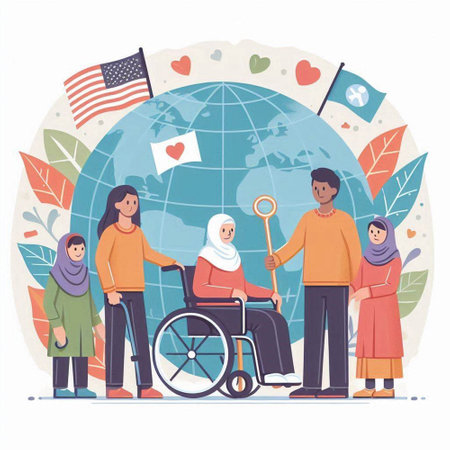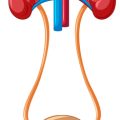Understanding Daily Living Skills in Occupational Therapy
What Are Daily Living Skills?
Daily living skills (DLS) are the basic activities people need to do every day to take care of themselves and live independently. In occupational therapy (OT), these skills are central because they help individuals participate fully in their homes, schools, workplaces, and communities.
Why Are Daily Living Skills Important in OT Practice?
Occupational therapists work with people of all ages who may have difficulties performing daily living skills due to injury, illness, developmental delay, or disability. By focusing on DLS, OTs empower clients to achieve greater independence and improve their quality of life. These skills are often the foundation for setting meaningful goals and tracking progress throughout the therapy process.
Commonly Assessed Areas of Daily Living Skills
OTs assess a range of daily living skills. These assessments help identify strengths and areas for improvement. The most common areas include:
| Skill Area | Description | Examples |
|---|---|---|
| Self-Care | Personal hygiene and grooming tasks necessary for health and well-being | Bathing, dressing, brushing teeth, toileting, eating |
| Home Management | Tasks required to manage a household independently or with support | Meal preparation, laundry, cleaning, budgeting, medication management |
| Community Participation | The ability to engage safely and effectively in activities outside the home | Shopping, using transportation, managing appointments, social participation |
The Role of OTs in Evaluating DLS
OTs use various tools and observations to evaluate how well a person performs these skills. This evaluation helps create personalized intervention plans tailored to each client’s needs and goals. Assessment is ongoing—it’s not just about checking boxes but understanding real-life challenges and celebrating every step forward.
2. Assessment Tools and Strategies
Understanding Assessment in Daily Living Skills
Occupational therapists (OTs) play a key role in evaluating clients’ abilities to perform daily living skills, or activities of daily living (ADLs), such as dressing, bathing, cooking, and managing money. To accurately track progress and plan effective interventions, OTs use a mix of standardized and non-standardized tools, while always considering each client’s background and culture.
Standardized Assessment Tools
Standardized tools are essential for providing reliable and valid measurements. These tools use set procedures and scoring systems, which help compare results across different clients or over time. Here are some commonly used standardized assessments in the United States:
| Assessment Tool | Purpose | Typical Use |
|---|---|---|
| Katz Index of Independence in Activities of Daily Living (Katz ADL) | Measures basic self-care abilities like bathing, dressing, toileting, transferring, continence, and feeding | Older adults, hospital discharge planning |
| Barthel Index | Assesses functional independence in mobility and self-care tasks | Rehabilitation settings, stroke recovery |
| Functional Independence Measure (FIM) | Covers physical, psychological, and social function using 18 items | Inpatient rehabilitation; insurance documentation |
| Pediatric Evaluation of Disability Inventory (PEDI) | Evaluates functional capabilities in children ages 6 months to 7 years | Pediatric clinics, schools |
| Canadian Occupational Performance Measure (COPM) | Client-centered measure for identifying issues in self-care, productivity, leisure from the client’s perspective | Pediatric to adult settings; goal setting and outcomes tracking |
Non-Standardized Assessment Methods
While standardized assessments are valuable, non-standardized methods allow OTs to gather more personalized information about a client’s unique circumstances. These might include:
- Observation: Watching clients perform everyday activities in their real-life environments provides insight into their actual abilities and challenges.
- Interviews: Talking with clients and their families helps understand goals, routines, preferences, and concerns.
- Activity Analysis: Breaking down tasks to identify barriers or supports needed for successful performance.
- Anecdotal Records: Writing brief notes about specific incidents or behaviors observed during sessions.
Culturally Relevant Evaluation Practices in the U.S.
The U.S. is a diverse country with people from many backgrounds. Culturally relevant evaluations mean respecting each person’s values, traditions, language needs, and family structures. Some best practices include:
- Using interpreters or translated materials when necessary.
- Selecting assessment tools that have been validated for diverse populations.
- Avoiding assumptions about habits or routines based on stereotypes.
- Involving family members in the evaluation process when appropriate.
- Tailoring questions to reflect the client’s environment (for example: asking about using chopsticks vs. forks if culturally relevant).
Best Practices for Gathering Meaningful Data
To get a full picture of a client’s progress with daily living skills, OTs should combine multiple strategies:
- Mix standardized and non-standardized assessments for a balanced view.
- Document both strengths and areas needing improvement.
- Re-assess regularly to monitor changes over time.
- Use clear language that clients and families understand in all documentation.
- Create individualized goals that are meaningful to the client’s life situation.

3. Setting Functional and Client-Centered Goals
Why Client-Centered Goals Matter
In occupational therapy, setting goals that truly reflect each clients daily life, values, and background is essential for meaningful progress. American occupational therapy frameworks, like the Occupational Therapy Practice Framework (OTPF), emphasize that goals should be functional and centered on what matters most to the client in their real-world environment.
Strategies for Collaborative Goal-Setting
Collaborative goal-setting means working with clients, not just for them. This approach helps ensure that therapy is relevant and motivating. Here are some practical strategies:
1. Start With a Conversation
Take time to listen and learn about your clients routines, challenges, interests, and cultural preferences. Use open-ended questions such as:
- “What does a typical day look like for you?”
- “Are there any activities you wish you could do more independently?”
- “What would make your daily life easier or more enjoyable?”
2. Use Standardized Assessments and Tools
Standardized tools like the Canadian Occupational Performance Measure (COPM) or Goal Attainment Scaling (GAS) can help structure the goal-setting process while keeping it personalized. These tools prompt discussion about priorities and track changes over time.
3. Respect Diversity and Individual Values
Clients backgrounds shape their goals. Some may value independence in cooking, while others prioritize being able to participate in religious or community events. Be mindful of cultural nuances and use language that resonates with each person.
4. Make Goals SMART
The SMART framework ensures goals are:
| Element | Description | Example |
|---|---|---|
| Specific | Clear and detailed | Put on a shirt without help |
| Measurable | Able to track progress | Button all buttons independently 4 out of 5 times |
| Achievable | Realistic given current abilities | Work up from one button to all buttons over two weeks |
| Relevant | Tied to meaningful activity for the client | Dressing for work or social outings |
| Time-bound | Set within a specific timeframe | Achieve this within one month |
5. Regular Check-Ins and Adjustments
Circumstances change, so revisit goals regularly with your client. Celebrate progress together and adjust goals as needed to keep therapy meaningful and motivating.
Cultural Considerations in the U.S. Context
The U.S. is diverse, with varying family structures, living situations, and community resources. Occupational therapists should adapt communication styles, respect personal choices, and honor traditions that may influence daily living skills.
Quick Tips for Effective Goal-Setting:
- Avoid jargon—use plain language clients understand.
- Write goals that fit naturally into the clients home or community routines.
- Encourage family or caregiver involvement when appropriate.
- Create visual aids or checklists if helpful for tracking progress together.
This collaborative and individualized approach ensures that daily living skills interventions are both effective and meaningful in the lives of American clients.
4. Monitoring Progress and Making Adjustments
Occupational therapists (OTs) play a key role in helping clients improve their daily living skills. To ensure that therapy is effective, it’s important to consistently monitor progress and make adjustments when needed. This section covers best practices for tracking client progress, documenting changes, and tailoring interventions based on each individual’s unique needs.
Best Practices for Ongoing Documentation
Accurate and timely documentation is at the heart of quality occupational therapy. Good records help you see what’s working, communicate with other professionals, and keep everyone—including the client and their family—on the same page.
What Should Be Documented?
| Aspect | Examples |
|---|---|
| Client Performance | Level of independence in tasks like dressing or feeding |
| Changes in Ability | Improvements or setbacks since last session |
| Interventions Used | Adaptive equipment, new routines, or environmental modifications |
| Client Feedback | How the client feels about the tasks and their own progress |
| Family/Caregiver Input | Observations or concerns from those supporting the client at home |
Progress Tracking Tools and Tips
OTs in the United States often use standardized tools to track progress in daily living skills. These tools provide objective data that can be easily shared across care teams.
Common Progress Tracking Methods
- The Canadian Occupational Performance Measure (COPM): Helps capture the client’s perspective on their performance and satisfaction with daily activities.
- The Functional Independence Measure (FIM): Rates independence in basic self-care tasks.
- Goal Attainment Scaling (GAS): Tracks progress toward individualized goals.
- Daily/Weekly Logs: Simple charts or checklists for recording performance over time.
Modifying Interventions Based on Performance and Needs
No two clients are alike. As an OT, it’s essential to adjust your approach as clients change or as new challenges arise. Here are some practical ways to stay flexible:
Tips for Adjusting Interventions:
- Regular Check-Ins: Meet with clients frequently to discuss how they feel about current strategies and any new barriers they face.
- Tweak Goals: Break large goals into smaller steps if a client is struggling or set more challenging targets if they’re progressing quickly.
- Add or Remove Supports: Introduce assistive devices, change routines, or modify the environment as needed.
- Cultural Sensitivity: Always consider personal values, traditions, and preferences when making adjustments to interventions.
- Team Collaboration: Communicate regularly with other healthcare providers, teachers, or employers involved in your client’s care plan.
A Sample Progress Adjustment Table
| Date | Observed Change | Action Taken |
|---|---|---|
| 03/01/2024 | Dressing independently but slower than expected | Broke task into smaller steps; provided visual cues |
| 03/15/2024 | Trouble using adaptive utensils at lunch | Tried different utensil shapes; practiced grip exercises together |
| 04/01/2024 | No longer needs reminders for medication management | Began focusing on next goal: meal preparation skills |
This ongoing process of monitoring progress and making thoughtful adjustments ensures that each client receives personalized support that matches their evolving abilities and goals. By staying proactive and responsive, OTs help clients reach their highest level of independence in everyday life.
5. Effective Documentation and Communication
Why Clear Documentation Matters
Clear and accurate documentation is a cornerstone of occupational therapy practice in the United States. It ensures that progress in daily living skills is tracked over time, supports collaborative care, meets legal and insurance requirements, and most importantly, centers on the individual’s unique goals and needs.
Person-Centered Documentation
Person-centered documentation means focusing on what matters most to your client. Use language that reflects their strengths, preferences, and goals. Avoid jargon when possible, and ensure your notes are respectful and easy for others to understand.
Example: Person-Centered vs. Generic Documentation
| Generic Documentation | Person-Centered Documentation |
|---|---|
| Client completed dressing tasks with minimal assistance. | Maria buttoned her shirt independently today after practicing adaptive strategies she selected during last week’s session. |
| Client was cooperative during session. | David actively participated in meal prep activities by choosing recipes he enjoys and suggesting modifications for safety. |
Compliant Documentation for U.S. Healthcare Standards
Your notes should always include:
- Date and time of service
- Type of intervention (evaluation, treatment, education)
- Client’s response to intervention
- Progress toward established goals
- Modifications or changes in plan of care
- Your professional signature and credentials
SOAP Note Format (Commonly Used in the U.S.)
| S (Subjective) | O (Objective) | A (Assessment) | P (Plan) |
|---|---|---|---|
| What the client says or feels about their performance (“I was able to wash my hair by myself!”) | Observable, measurable data (Client completed grooming task with built-up handle brush in 10 minutes.) | Your professional analysis (Improved fine motor control noted; less fatigue compared to prior sessions.) | Next steps (Continue task practice; introduce new adaptive equipment next session.) |
Tips for Interdisciplinary Communication
- Use common terminology understood by all team members.
- Cite specific examples of client performance rather than general statements.
- Email or document in shared electronic health records whenever possible for real-time updates.
- Respect privacy laws like HIPAA when sharing information.
Navigating Insurance Requirements
Insurance companies often review OT documentation to determine coverage for services. Make sure to:
- Clearly link interventions to functional goals that matter to the client.
- Describe how progress impacts participation in daily life (not just test scores).
- Avoid vague phrases like “doing better” – be specific about what changed.
- If using standardized assessments, document both the results and what they mean functionally.
Quick Reference: Do’s & Don’ts for Documentation
| Do’s | Don’ts |
|---|---|
| – Be concise but thorough – Focus on function – Use active voice – Update goals regularly – Involve the client in setting goals and reviewing progress |
– Use vague or judgmental language – Copy-paste old notes – Omit critical details – Ignore interdisciplinary input – Forget to sign or date your note |


